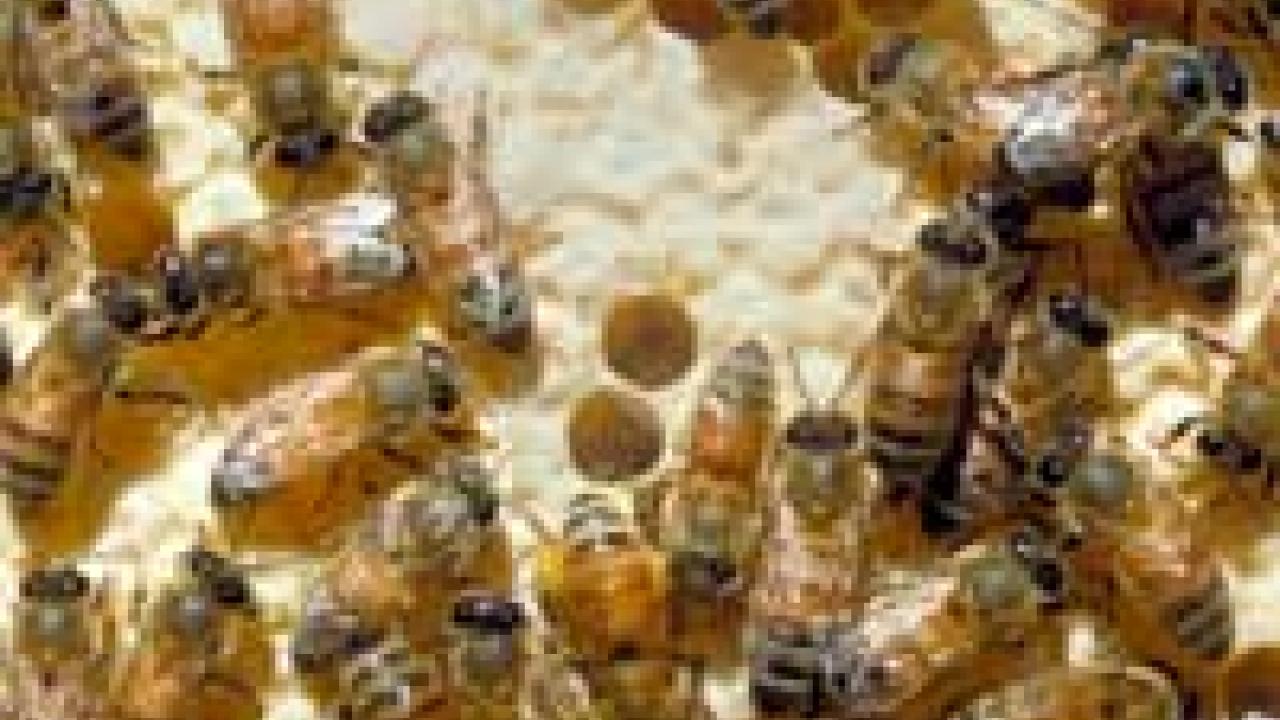The genetic signal that makes a honeybee male or female has been identified by researchers in Germany, the U.S. and Norway. The finding, published in the August 22 issue of the journal Cell, shows how male bees can have no father, a scientific puzzle going back over 150 years and the explanation for why bees, ants and wasps often form colonial societies. It could also make it easier to breed honeybees.
The researchers found that female bees have two different versions of a gene called csd, one from each parent, that form an active protein that triggers female development. Unfertilized eggs, which have only one copy of csd from the mother, default to being males.
In 1845, a Polish parish priest called Johann Dzierzon proposed that male bees have no fathers: They develop from unfertilized eggs, while females grow from fertilized eggs. Later work showed that Dzierzon was right. Male bees have half as many genes (haploid) as females, which get a set of genes from each parent (diploid). About one-fifth of animal species including all ants, bees and wasps use a similar haplodiploid system of sex determination, but the actual genes and mechanisms involved are not well understood.
Martin Beye and Martin Hasselmann from the Martin Luther University of Halle/Wittenberg, Germany, and Robert Page and Kim Fondrk at the University of California, Davis, isolated a honeybee gene called complementary sex determiner, or csd. Csd exists in 19 alternative versions, or alleles, Page said. Female bees have two copies of csd which are always different alleles. Males have only one copy.
The researchers worked out the DNA sequence of four csd alleles and found that they were highly variable. But the same alleles were found in both males and females, showing that there are no alleles for "maleness" or "femaleness."
Studies on developing eggs showed that in both males and females, the csd gene becomes active about 12 hours after eggs are laid and remains active throughout development. In collaboration with Stig Omholt of the Agricultural University of Norway, the researchers used RNA interference to block activity of the csd gene. Female eggs developed into insects with male gonads. The same treatment had no effect on male eggs.
The scientists think that the proteins made by the two different versions of csd in a female pair up to form a single unit which acts on the next step in sex determination, probably by affecting the expression of other genes. If only one type of csd is made, no active protein is formed and the bee grows into a male.
"The csd gene is the major invention that enabled the evolution of the ants, bees and wasps and their complex societies by enabling the evolution of haplodiploidy," Page said. Because males have just one set of genes, sisters that work together in the nest share more genes in common with each other than they would with their own sons and daughters.
But this also has a downside for bee breeders. When bees are inbred to select desired traits, fertilized eggs with two copies of the same csd allele can occur. These eggs develop into sterile diploid males. Worker bees find and kill these sterile males as larvae. That means that inbred honeybee colonies quickly die out.
"This problem has haunted bee breeding since the 1940s. As we understand more, there will be ways to get around this problem," Page said. Beekeepers could set up matings with bees of different csd type, or find ways to manipulate the gene to get viable crosses.
Breeding bees is hard enough already. Wild bees mate only once, in flight to their new nest. In the 19th century, Gregor Mendel, who discovered the principles of inheritance in pea plants, also tried to breed bees without success. In the 1940s, Harry H. Laidlaw, Jr. now a professor emeritus of entomology at UC Davis, and others pioneered methods for artificial insemination of bees, allowing selective breeding for the first time. But attempts to create long-lived inbred strains generally failed.
Media Resources
Andy Fell, Research news (emphasis: biological and physical sciences, and engineering), 530-752-4533, ahfell@ucdavis.edu
Pat Bailey, Entomology, 530-219-9640, pjbailey@ucdavis.edu
Robert Page, Martin Luther University, Halle/Wittenberg, Zoology, (530) 752-0492, repage@ucdavis.edu
Martin Beye, (49) (345) 552-1, beye@zoologie.uni-halle.de
